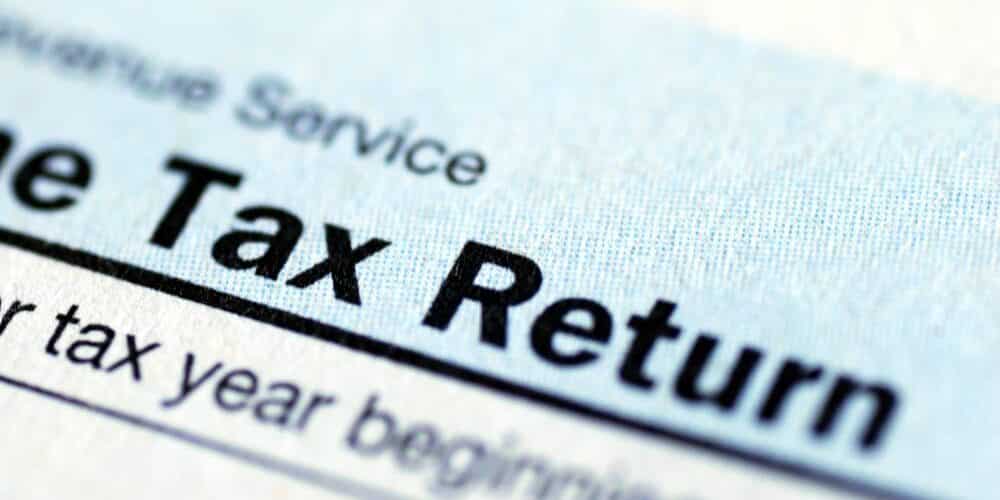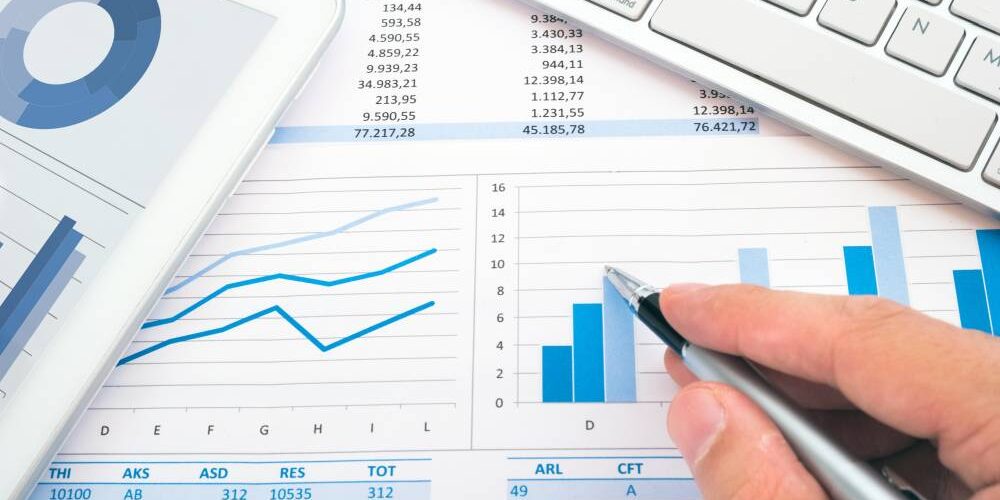
How Much Tax Do I Pay On ABN?
The question of what happens if you work on both an ABN and a TFN has been a hot topic in our Australian offices this week, and several clients have questioned us about it.
People frequently work on both sorts of tax statistics, but this can lead to major confusion when it comes time to file their annual tax return. We’ve decided to explain how everything works in order to clear things up once and for all.
You’re probably familiar with your Australian Business Number if you own a business (ABN). As a business owner, you must also follow the Australian Tax Office’s regulations (ATO). Your ABN serves as a reference point for mailing invoices and other papers, as well as indicating that you are responsible to the ATO if you fail to meet your tax obligations.
We’ll go over your tax responsibilities as an ABN holder in this guide. The tax you must pay on your ABN is mostly determined by your business and combined revenue. When the fiscal year ends on June 30, all of this is counted and assessed.
An ABN is a unique identifier for your company. It is not a substitute for your tax identification number. Discover how to obtain an ABN. It will be required for tax and other commercial purposes.
What is Australian Business Number?
So, for those who are unfamiliar, let us first define them. An ABN (Australian Business Number) is required for all businesses operating in Australia. In addition, all self-employed people must have an ABN and include it on invoices for work done. Trades like carpentry, cosmetic services, and personal training are common examples of vocations that require an ABN.
An ABN is required for your business to operate in Australia (Australian Business Number). This unique 11-digit number is supplied when you register your firm and serves as the primary means of identification. An ABN is necessary for sole traders, partnerships, and corporations.
In only a few minutes, you can register your ABN using an online form. It is critical to register your ABN for tax purposes, including GST and PAYGW. If the ATO discovers that you haven’t applied for an ABN and your business makes more than $75,000 in sales to Australian clients each year, you could face a penalty. If you conduct business with other companies, they may refuse to pay you if you do not include your ABN on your invoices.
An Australian Business Number, often known as an ABN, acts as a unique identifier for your firm both in the eyes of the general public and the Australian government.
In addition to establishing your firm identification when ordering and invoicing, you can save money on taxes at some stores by obtaining an Australian business number (ABN). You can also get an Australian domain name with an ABN. Getting an Australian Business Number (ABN) is one of the first things you should do when setting up your company the right way. You will learn everything you require to know in order to obtain an ABN by reading this book.
Customers, vendors, and the government in Australia all use something called an Australian Business Number (ABN) to identify your firm. This number is made up of 11 digits. It is retained in addition to a Tax File Number and is distinct from both an Australian Company Number (ACN) and a business name. Additionally, it is required to be kept.
You can do the following with an ABN:
- When ordering and invoicing, confirm your company’s identity to others.
- Avoid having your business clients withhold a portion of any cash you get
- Make a business name registration
- Register a .com.au, .net.au, or .org.au domain name
If you require help with your bookkeeping, you can give us a call on (03) 8568 3606 or email us on [email protected].
Determine if you require an ABN
It is not necessary for everyone to have an ABN. You need to be the owner or operator of a business or other operation in order to get one (as opposed to a hobby).
Visit the website of the Australian Business Register (ABR) to determine whether or not you are eligible to apply for an ABN.
If you apply for an ABN but don’t qualify, your application may be rejected. The Australian Taxation Office will explain the basis for the refusal.
Many various types of businesses, from major enterprises to freelancers, have an ABN.
If you plan to start or already own a business in Australia, you are required to obtain an ABN. What it means to “carry on an enterprise” is to operate a company or participate in commercial activity of some kind, such as the buying and selling of goods and services. The definition of an enterprise provided by the Australian Business Register encompasses not-for-profit organisations like charities as well as property renting and leasing businesses.
If you want to register for Goods and Services Tax, you’ll need an ABN (GST).
The eligibility conditions for each business structure are different:
- Individual entrepreneurs
- Sole traders are the lone owners of a firm and are legally accountable for all elements of it. Partnerships are eligible for an ABN.
- Partnerships
- Partnerships are eligible for an ABN as two or more people or entities who run a business and distribute income and losses between themselves
- Companies
- Companies that are registered with the Australian Securities & Investments Commission (ASIC) can apply for an ABN
- Trusts
- A trust runs a business, holds property or assets for the benefit of others (beneficiaries) and is eligible for an ABN
If you’re based in the Christmas or Cocos Islands, or have a joint venture with partners who each have their own ABN, you don’t require an ABN.
The Business Registration Service can help you get an ABN and other important business registrations. Make sure you have the following items before registering:
- identified your business structure
- proof of identity
- details of your business activities and associates ready
The Australian Business Number (ABN) is a one-of-a-kind 11-digit number assigned to all organisations registered with the Australian Business Register (ABR).
The 11-digit ABN is made up of a 9-digit identifier with two check digits in front. The leading check digits are calculated using a modulus 89 calculation (remainder after dividing by 89).
To verify an ABN:
- Subtract 1 from the first (left-most) digit of the ABN to give a new 11 digit number
- Multiply each of the digits in this new number by a “weighting factor” based on its position as shown in the table below
- Sum the resulting 11 products
- Divide the sum total by 89, noting the remainder
- If the remainder is zero the number is a valid ABN
Free of charge is the ability to apply for an ABN. On the other hand, you could have to pay some sort of fee if you have a tax agent handle everything on your behalf.

To apply for your ABN, you’ll need the following documents, depending on your circumstances:
- Any previous ABNs you’ve had
- Your tax file number (TFN)
- You’ll also need the TFNs of any associates like partners, directors and trustees
- Your Australian Company Number (ACN) or Australian Registered Body Number (ARBN)
- If you already have these, remember your ACN can be applied for at the same time as the ABN
- Your legal entity name
- This name appears on all official documents and legal paperwork, and it can be applied for simultaneously at the ABN
- The date your ABN is required
- They must have permission to make modifications or update data on behalf of the entity.
- The licence number of your professional advisor
- If you’ve engaged one, for example, an Australian Financial Services (AFS) licence
- Your tax agent registration number
- Any other authorised contacts that are available
- They need to be granted permission to make alterations or updates to the information on the entity’s behalf.
- Any associates’ details like shareholders or directors
- The qualifications to become an associate vary depending on the type of company.
- Your company’s operations
- Agriculture, construction, investing, and manufacturing are examples of businesses where this is the primary source of revenue.
- Your place of business
- Unless there is a risk to individuals’ safety, such as a women’s refuge, provide business locations for any premises run by your company.
As soon as you submit your application, you will obtain your ABN. It may take up to 28 days to complete your application if you omit key facts or they cannot be validated.
The Tax-Free Threshold And ABNs
The majority of people with an ABN must file an annual income tax return. You must file an annual income tax return if you operate a business. The duty to file is in place regardless of whether the company is profitable or not, and it is not subject to the tax-free threshold.
Each financial year, the Australian Tax Office (ATO) collects income tax from working Australians. Financial years in Australia run from July 1 to June 30 of the following year, thus we are approaching the start of the 2020/21 fiscal year (1 July 2020 to 30 June 2021).
ABN & Tax
In the case of an ABN, tax is not deducted at the source; however, because the person issuing the invoice and receiving the payment is getting full payment for the items or services, a portion of that income should be kept to cover the tax burden at the end of the financial year. This is because tax is not deducted at the source.
When focusing solely on the TFN or ABN paradigm, most people have little trouble comprehending the obligations that are placed on them. People frequently run into confusion when they have two occupations in the same tax year, one of which is an ABN and the other of which is a TFN, or if they have a full-time TFN employment but also run a small business that earns ABN income on the side, perhaps as a hobby. Both of these scenarios are common causes of confusion.
When conducting business in Australia, you are needed to have a Tax File Number (TFN), however if you are self-employed, you only need an Australian Business Number (ABN). The majority of people submit an application for their own Tax File Number (TFN) when they begin their first employment. You will never be free of your TFN; it will always be associated with you. If, on the other hand, you and your business partner decide to join a partnership, each of you will be required to have your own TFN.
When you first start working, you must provide your TFN to your employer, who can then deduct tax from your pay. This is usually accomplished through PAYGW (Pay as You Go Withheld). Tax is deducted at the source, or when you are paid, when you have a TFN. This usually implies you won’t have to worry about your tax responsibilities at the end of the year.
You can use your present TFN for tax reasons if you conduct your business as a lone trader. If you are part of a partnership or have launched a business, your company will have its own TFN.
Tax is not taken immediately from the source when you have an ABN. For example, a carpenter who submits an invoice will be paid in full; tax will not be deducted at this point.
As a sole trader with an ABN, you must set away a percentage of your revenue in order to fulfil your tax obligations at the end of the financial year. When June arrives, you must combine your ABN profits with any other income you have earned; tax is charged on that combined income when you file your tax return. The tax-free income level is $18,200. If your income is more than this, you will be subject to progressive tax rates.
Your business structure determines what and how you must report. You can also use the ATO tax calculator to figure out how much you have to pay.
How to File and Pay Taxes
Every year, your company must file a tax return, and you may need to file business activity statements more frequently. Your business structure will determine how you file your taxes. Learn how to file tax returns and your payment alternatives.
Check Your Business Type’s Requirements
Even if you make a loss or don’t meet the tax threshold, your company must file a tax return each year. Make sure you understand the requirements that apply to your business structure before filing your return:
- Sole trader – Lodge an individual tax return. Use a separate business schedule to report all of your business income on your tax return. A separate tax return for your business is not required.
- Partnership – However, despite having its own tax identification number (TFN), your partnership does not have to pay income tax on the money it makes. Every partner is responsible for filing their own individual tax return to account for the revenue they received from the partnership. In addition, your partnership is required to submit its own individual tax return under its own Taxpayer Identification Number (TFN).
- Company – Your partnership has its own tax file number (TFN), but it does not pay income tax on its profits. Each partner files their own tax return to report their portion of the partnership income. Additionally, your partnership must file a separate partnership return with its own TFN.
- Trust – A trust is needed to submit its own separate income tax return and is given its own unique TFN.
You may be eligible for tax breaks if you run a not-for-profit organisation. On the Australian Taxation Office (ATO) website, you may find a summary of tax reductions for non-profit organisations.

Requirements for Business Activity Statements
When you apply for an ABN and GST, the ATO will send you a business activity statement (BAS) when it’s time to file. You can use your BAS to record and pay various taxes, such as:
- tax on goods and services (GST)
- luxury car tax
- wine equalisation tax
- pay as you go (PAYG) withholding
- Pay as you go (PAYG) instalments
- fringe benefits tax (FBT) instalments
You have various alternatives for filing your BAS, but most firms that file their own choose to do it online.
Do You Need To File A Tax Return?
Depending on the complexity of your company and your tax situation, you have the option of filing your return on your own or of hiring a professional to do so on your behalf.
You can file your tax return by going to:
- with a registered tax agent
- online with myTax if you’re a sole trader
- with standard business reporting enabled software if you’re a company, trust or partnership
You can file a BAS by:
- through a registered tax or BAS agent
- online (online services in myGov, the business portal or SBR-enabled software)
- by phone (for nil BAS statements only)
- by mail
Make sure your tax or BAS agent is registered with the Tax Practitioners Board (TPB). Search the TPB registry for them to see if they’re registered.
Conclusion
An ABN is required for commercial operations, while a TFN (Tax File Number) is required. Tax is deducted at the source, or when you are paid, when you have an ABN. If you are part of a partnership or have launched a business, your company will have its own TFN. Every year, your company must file a tax return. Your business structure will determine how you file your taxes.
Use a separate business schedule to report all of your business income. A separate tax return for your business is not required. Learn how to file tax returns and your payment alternatives. When you apply for an ABN and GST, the ATO will send you a business activity statement (BAS). You can use your BAS to record and pay various taxes, such as:tax on goods and services (GST), wine equalisation tax, and fringe benefits tax (FBT).
